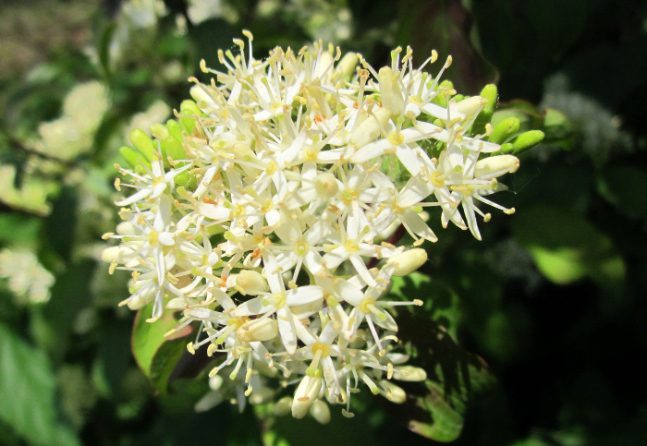Cornus sanguinea | Common Dogwood
Native to the UK, Europe, Asia and North America the Cornus sanguinea is a broadleaf shrub found in woodlands and hedgerows. This tree has fresh, green leaves that fade to crimson before falling in autumn. The oval leaves are 6cm long with smooth edges and distinctive curving veins. Clusters of small, white flowers appear in June with an unpleasant smell! In autumn, once pollinated, the female flower becomes a small black berry called the "dogberry". The Cornus sanguinea thrives in damp conditions and water-logged sites, and tolerates most soil types, although once established this tree will thrive equally well in dry sites with poor soil. The Cornus sanguinea looks best in autumn and winter when brilliant-red stems create a vibrant addition to the landscape. This shrub is usually planted as a multi-stem, ornamental plant in gardens and parks where the colourful stems give a stunning display in winter. There are many varieties of Cornus available with different coloured stems: Cornus sericea 'Flaviramea' for a yellow stem, Cornus sanguinea 'Midwinter Fire' for a vibrant red and orange stem, and the Cornus alba 'Sibirica' for a bright red stem. To maintain the desired size of the Cornus sanguinea remove a third of the plant back to ground level every spring.







